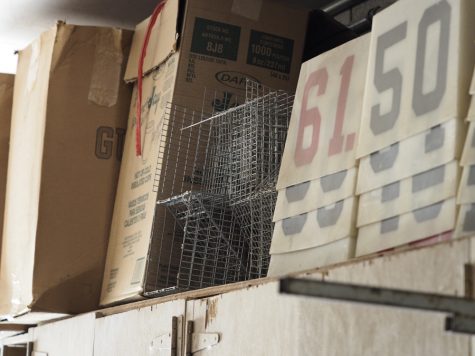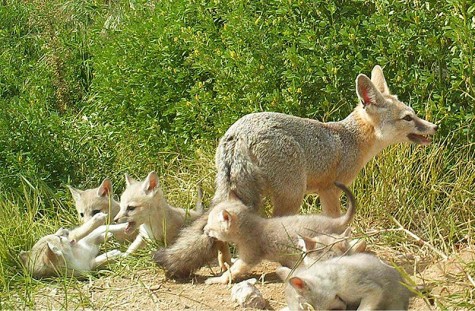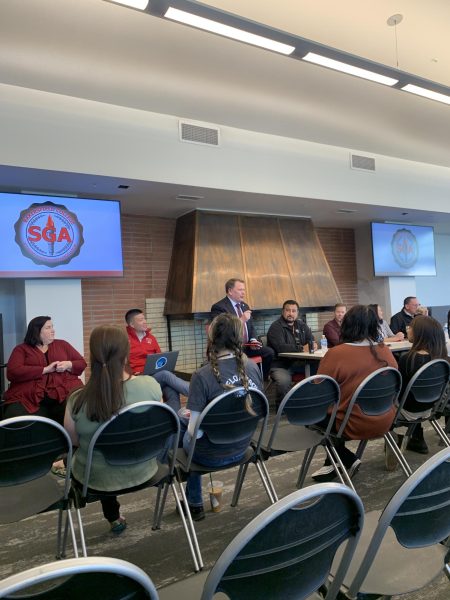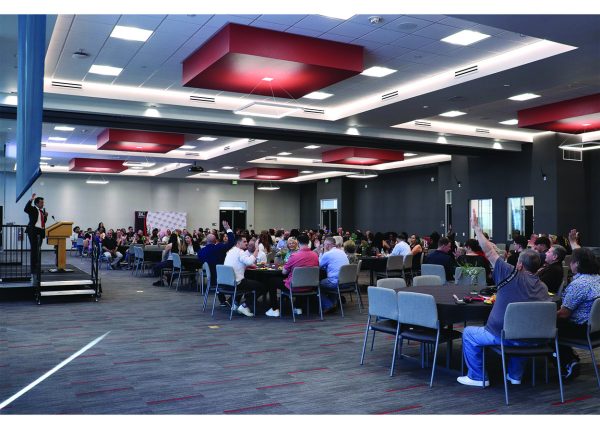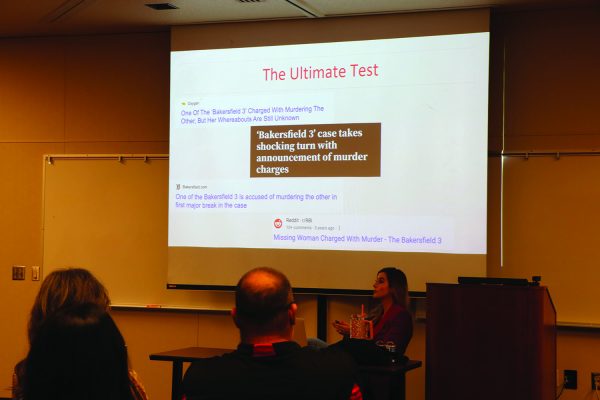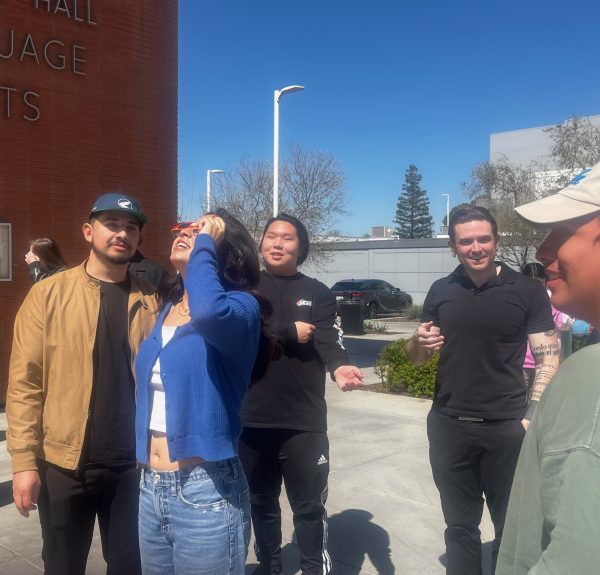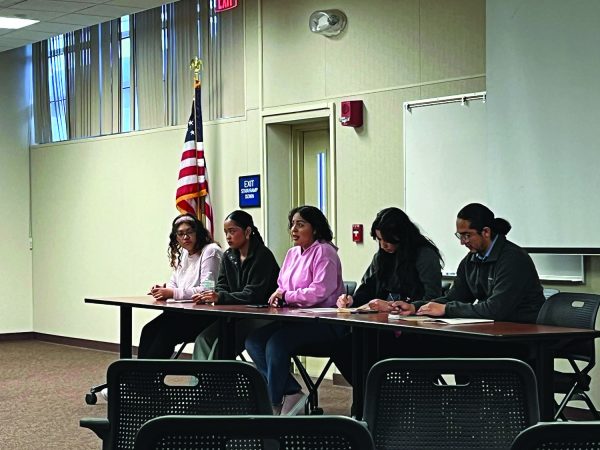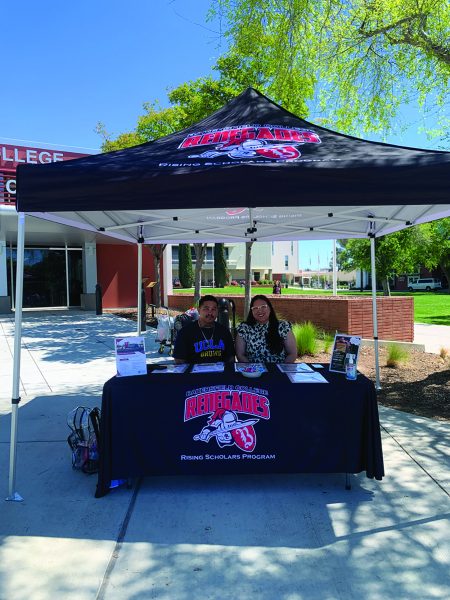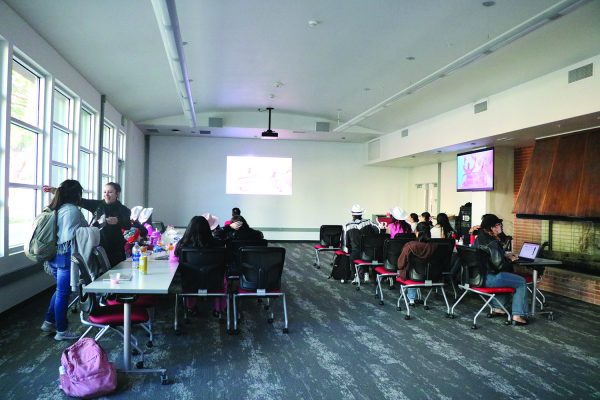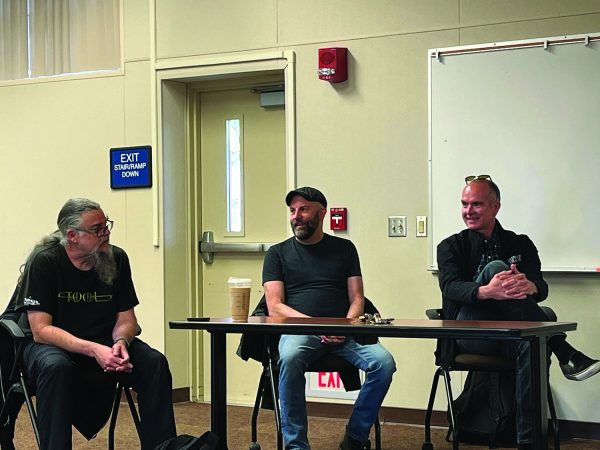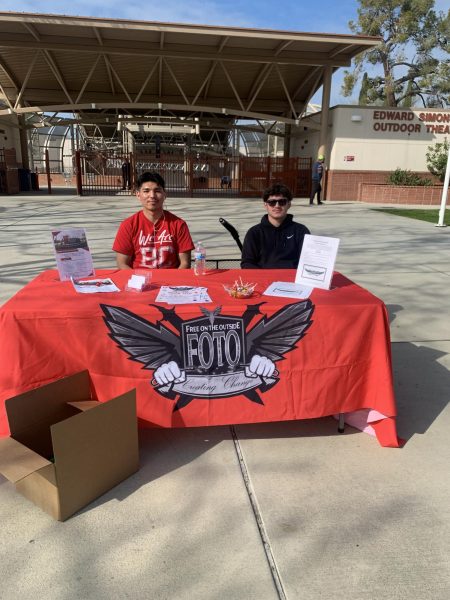Kit fox: BC admin responds to kit fox issue
The Renegade Rip continues its investigation into Bakersfield College’s removal of kit foxes from Memorial Stadium.
In an interview with The Rip on April 13, Anthony Culpepper, vice president of Finance and Administration at Bakersfield College, explained the administration’s role in attempting last year to remove kit foxes from a hillside in Memorial Stadium.
Culpepper was responding to two stories in the April 6 edition of The Rip in which sources observed activities last year that didn’t seem appropriate for removing the kit foxes as well as an expert from the Endangered Species Rescue Program criticizing the methods used in the process.
Culpepper became aware of a situation involving the kit foxes in the stadium mid to late 2014.
“The mulch was donated by one of BC’s constituencies. We have a lot of individuals who are very much interested in the Memorial Stadium, interested in the beautification of the campus,” stated Culpepper.
The initial plan was for the mulch to be spread on the hillside inside Memorial Stadium. The plan immediately ran into difficulties, because that same hillside is inhabited by several kit foxes, which are protected by both Federal and State Endangered Species Acts.
According to Culpepper, Craig Rouse, who was the former manager of Facilities, Maintenance and Operations at BC, immediately reached out to a wildlife biologist identified as Vicky Monroe and others at The Department of Fish and Wildlife, to get direction on what should be done.
“My understanding is there was a direct discussion between Craig and Vicky, along with other people. There was a discussion about what to do, concerning spreading the mulch or not spreading, or what to do to coexist with the kit foxes,” stated Culpepper.
When it comes to dealing with endangered species such as the kit fox, there are not only state laws and regulations that must be followed, but there are also federal laws and regulations that must be followed, according to Colleen O’Brien, senior director of communications for People for the Ethical Treatment of Animals (PETA).
O’Brien further explained that both California and Federal laws require that permits be obtained any time there is a likelihood an endangered species will be encountered or if their habitat will be affected.
Part of the permit process as outlined on U.S. Fish and Wildlife Service website is a section that includes an explanation as to steps taken to monitor, minimize, and mitigate any impacts, and a section for any alternative actions considered and explanations as to why they were taken.
Culpepper acknowledged that BC did not have any permits, stating that “I am not aware of any permits that were necessary to do that, but I am not aware of any permits being suggested or required. We were in direct contact with the fish, game and wildlife and the expert biologist that they recommended, so if permits were required, they would have informed us of that.”
When directly asked about who approved the cementing of the dens, Culpepper stated, “the cement being poured into the den was something that was done when Craig Rouse was here, that conversation took place then, I don’t know if it was by direct communication from the biologist or not. I know that whatever procedures or steps we took, it was in collaboration with the experts and fish and game and wildlife. … I wasn’t there, I wasn’t present in that discussion.”
When asked about who did the actual cement work, especially when none of The Rip’s sources observed work being done during normal business hours, Culpepper responded, “I can’t speak to what other people indicate they saw or didn’t see, but I know what our processes are, and I know we were in direct with the fish and game and wildlife and the biologist. We had the reports, we paid them money, so our facilities people were in fact the ones who did the work.”
Following Rouse’s departure from BC in June 2015, Culpepper stated he became directly involved with the kit fox situation, and remained involved until Don Birdwell got grounded in his new position as manager of Facilities, Maintenance and Operations.
Culpepper stated, “I reached out immediately to the fish and game and wildlife, because some time had lapsed, so I reached out to them, because there were questions about the mulch. The mulch was sitting in the student parking lot.”
It was during this time that the mulch was re-located to a less prime location in the student parking lot next to Memorial Stadium, but according to Culpepper, a decision had to be made as to either discarding the mulch, or figuring out a way to coexist with the kit foxes while moving forward with the operations in Memorial Stadium.
The plan was to spread the mulch over Christmas break, under the direct supervision of the biologist. “They let us know exactly which areas were active, which areas were not active, they told us what we could do and not do, they came in and even supervised … witnessed how we spread the mulch,” stated Culpepper.
When asked if there was ever any thought given to creating a habitat or sanctuary for the kit foxes, Culpepper stated, “There was no thought on my part about making it a sanctuary or habitat, because the focus was to find what coexistence could happen. We needed to beautify the campus, we needed to continue to move operations forward, and to develop Memorial Stadium, because it’s the operation of the campus. It wasn’t trying to create another environmental habitat, it was about what the stadium was there to be used for and at the same time knowing that the kit foxes were there.”
Culpepper described Memorial Stadium as an athletics environment, but stated the beautification of the campus and landscaping is a Facilities, Maintenance, and Operations role, so this project was not a directive from athletics.
Looking forward, Culpepper stated there has not been any further interaction with the hillside to his knowledge, so it seems like coexistence has been established.
“It is my understanding that the kit foxes like the mulch, apparently they think it’s a warm blanket, they see them up in there playing with it all the time … who knows … nature is very interesting,” stated Culpepper.
Several interview requests have been sent to Rouse, and as of writing this story, no response has been received.
Additionally, The Rip has attempted to contact wildlife biologist Waring Laurendine of McCormick Biological Incorporated, who was identified as one of the biologists hired by BC. He has not responded.
During the course of the interview, Culpepper made it clear that he would not provide any of the documents he had in his possession, nor would he identify the person or organization who donated the mulch.
The Renegade Rip has submitted a public records request with the Kern Community College District, a copy of which can be seen at www.therip. com.
The Rip is requesting the identification of the donor who provided the mulch, any wildlife biologist reports or surveys, any documents from The California Department of Fish and Wildlife, any communication between Rouse/Birdwell and Culpepper regarding kit foxes, and a work schedule or timecards for all Facilities, Maintenance, and Operations employees for the timeframe of when the cement was poured.
In between the publication of the April 6 stories and the interview in this edition, Culpepper questioned why The Rip did not interview him for the story in the April 6 edition. In mid to late March, The Rip had contacted numerous employees and administrators at BC in an attempt to gather additional information about the kit foxes and how they were treated. Most of those contacted refused to comment and eventually directed The Rip to Culpepper.
In preparation for the April 6 paper, there was an unrelated news story in which The Rip attempted to contact and interview Culpepper. The initial interview request specifically talked about the status of Amber Chang, director of marketing and public relations, and did not mention the treatment of kit foxes and Memorial Stadium. It was then that The Rip learned Culpepper was the administrator to talk to about kit foxes.
Since the reporter working on the Chiang story had already left a message with Culpepper, he decided to wait for Culpepper’s response to also talk about kit foxes.
Culpepper said Chiang did not fall under his purview, so the interview request was forwarded to the appropriate person. Thus, The Rip did not make an interview request to Culpepper that specifically mentioned kit foxes, and The Rip reporter and Culpepper never talked directly.



